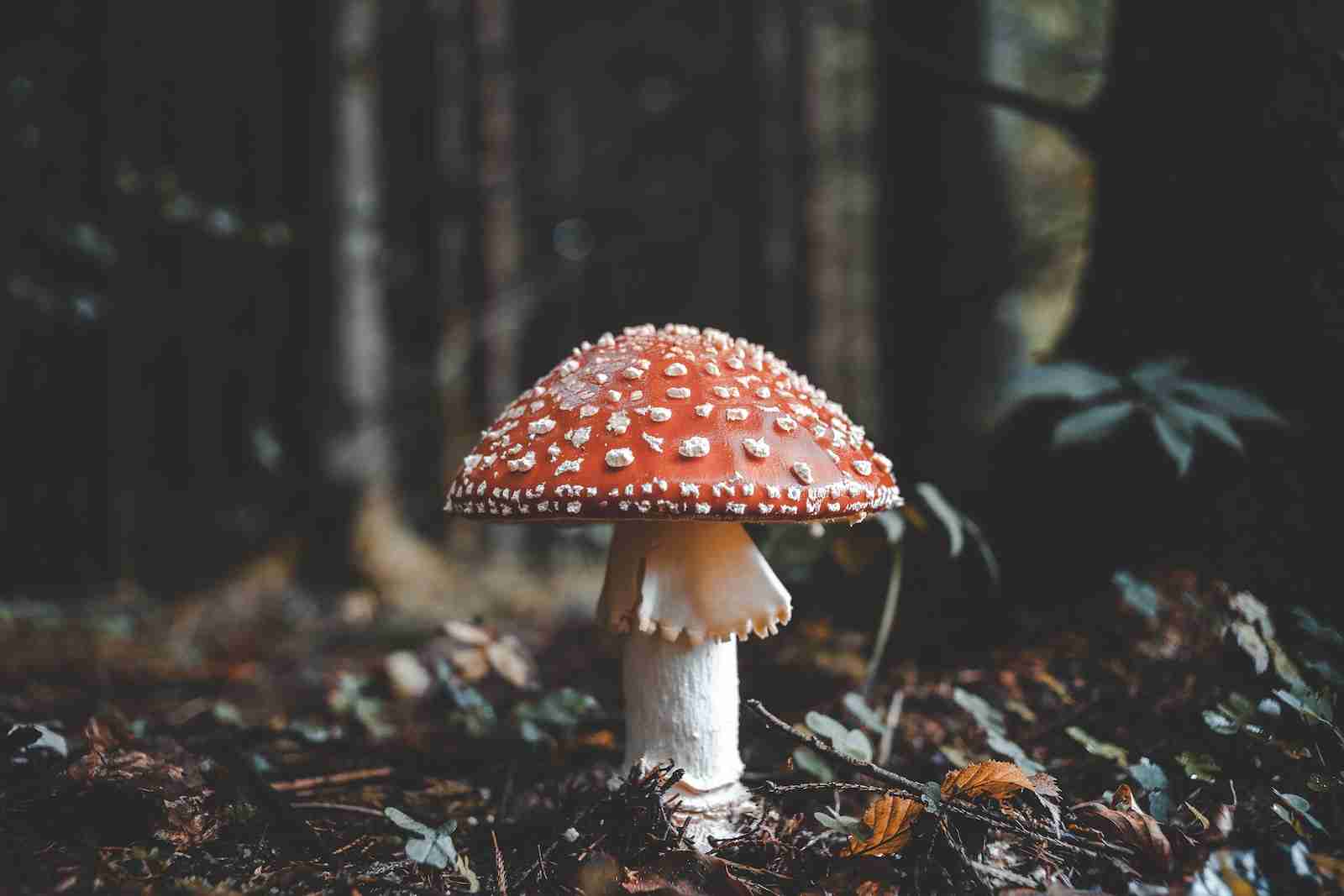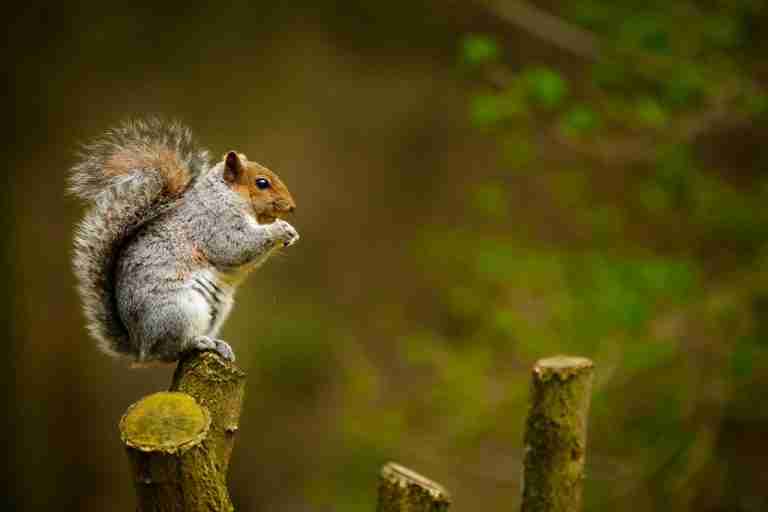27 Fun Facts About Fungi | Marvels of Decomposers
1. Fungi are more closely related to animals than plants.
Fungi’s unique characteristics, such as their method of nutrient absorption, place them closer to animals than plants in the biological kingdom.
This relationship is established through genetic and evolutionary studies, which reveal a shared ancestry with animals.
2. Largest organism: Armillaria ostoyae, spanning 2,385 acres in Oregon.
Armillaria ostoyae, commonly known as the honey fungus, holds the remarkable distinction of being the largest organism on Earth, covering an astounding 2,385 acres.
What’s truly astounding is that this massive organism consists of an intricate underground network of mycelium, with only the mushrooms emerging above ground to announce its presence.
3. Mushrooms are the fruiting bodies of hidden fungal organisms.
Mushrooms, often enjoyed in various culinary dishes, represent just the tip of the iceberg when it comes to fungi.
These conspicuous structures are the fruiting bodies of fungi, with the main organism residing out of sight beneath the soil, where the intricate mycelium plays the essential role of nutrient absorption and decomposition.
4. Yeast ferments sugars for bread and alcohol production.

The delightful aroma of freshly baked bread and the pleasurable taste of your favorite beer owe much of their existence to yeast, a type of fungus.
Yeast possesses the remarkable ability to ferment sugars, releasing carbon dioxide and alcohol as byproducts. This process is pivotal in bread-making, as it causes the dough to rise, and it plays a fundamental role in brewing, contributing to the alcoholic content and flavor of various beverages.
5. Mycorrhizal fungi aid in plant nutrient absorption.
Ever wondered how plants efficiently absorb nutrients from the soil?
Mycorrhizal fungi are the unsung heroes in this process. Through symbiotic partnerships, they extend the reach of plant root systems, enhancing nutrient absorption and making crucial elements like phosphorus and nitrogen more accessible to the plant, promoting mutual benefit in the natural world.
6. Lichens are symbiotic partnerships of fungi and photosynthetic organisms.
Lichens, those fascinating combinations of fungi and photosynthetic partners like algae or cyanobacteria, epitomize the beauty of symbiosis in nature.
The fungal component provides a stable structure and essential protection, while the photosynthetic organisms contribute by producing food through photosynthesis. This mutually beneficial relationship showcases nature’s ingenious collaborative solutions.
7. Fungi recycle nutrients by decomposing organic matter.
In the intricate web of ecosystem functioning, fungi hold a critical role as nature’s recyclers.
They excel at breaking down deceased plant material, hastening its transformation into simpler compounds and nutrients. Through this decomposition process, fungi play a vital part in returning essential elements to the environment for use by other organisms, effectively recycling the building blocks of life.
8. Penicillin originated from the fungus Penicillium.
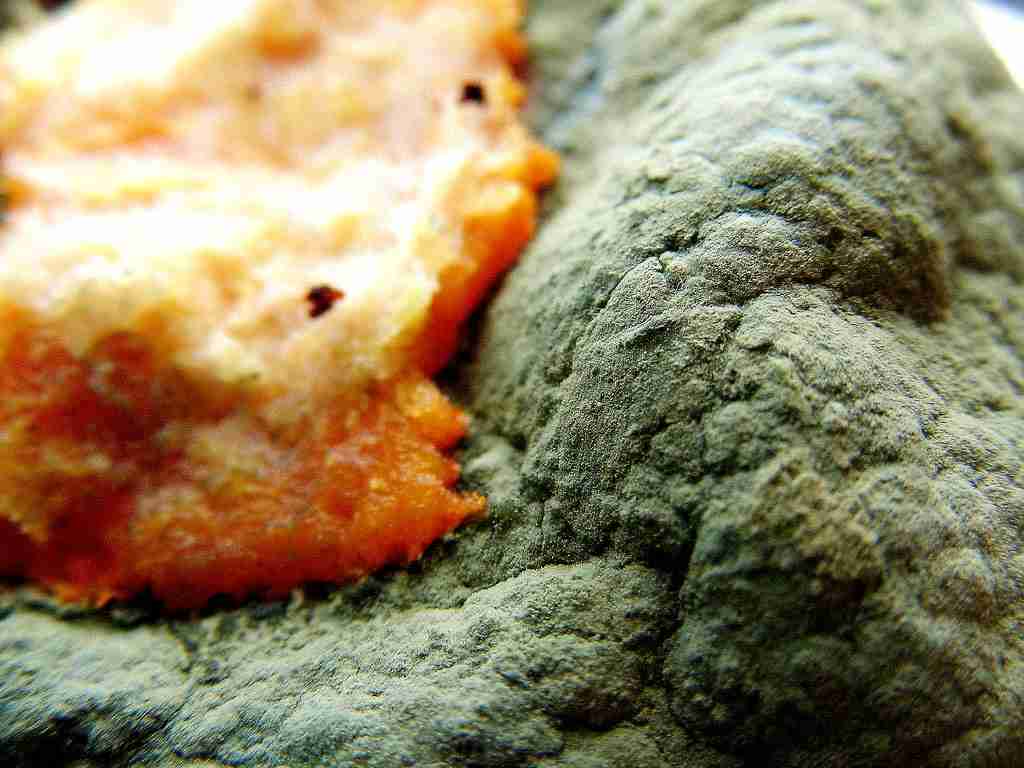
The discovery of penicillin, one of the most transformative advancements in medical history, traces its origins to the Penicillium mold.
This powerful antibiotic, credited with saving countless lives, emerged from the fungal world. Its ability to combat bacterial infections revolutionized medicine, ushering in the era of antibiotics and underscoring the incredible potential hidden within the fungal kingdom.
9. Over 70,000 fungal species exist; more remain undiscovered.
While more than 70,000 fungal species have been identified and classified, the fungal kingdom is believed to hold countless more yet to be discovered.
The astonishing diversity within this kingdom, ranging from microscopic molds to towering mushrooms, highlights the potential for ongoing scientific exploration and the untold stories that may still be hidden in the realms of fungi.
10. Truffles grow underground and are located by truffle-hunting animals.
The enigmatic and highly-prized truffle, celebrated in gourmet cuisine, has a hidden secret – it grows underground.
Locating these elusive delicacies is an art in itself, often achieved with the aid of truffle-hunting animals. Pigs and dogs, possessing an acute sense of smell, are traditionally employed to sniff out the distinct aroma that truffles emit, helping chefs and foragers uncover these culinary treasures hidden beneath the soil.
11. Mycology is the scientific study of fungi, which is one of the fun facts about Fungi.
For those captivated by the fascinating world of fungi, mycology is the designated scientific discipline.
Mycologists delve into a realm that encompasses the classification, biology, ecology, and diverse practical applications of fungi. Whether it’s unraveling the mysteries of fungal life, exploring their role in ecosystems, or harnessing their potential in biotechnology, mycology offers a comprehensive lens through which to view this remarkable branch of life.
12. Bioluminescent fungi can glow in the dark.
In the mystical realms of dark, forested environments, certain fungi, such as species of Mycena and Omphalotus, exhibit a captivating and eerie trait – bioluminescence.
These luminescent fungi can produce a soft, enchanting glow in the dark, a phenomenon that has fascinated observers and researchers alike, highlighting the astonishing diversity and adaptability of fungi in various ecosystems.
13. Fungi decompose dead plant material in forests.
In the serene setting of a forest, fallen trees and decaying plant material undergo a process of transformation, thanks to the diligent work of fungi.
These remarkable organisms function as nature’s decomposers, breaking down dead plant matter and returning vital nutrients to the environment. By playing this vital role, fungi actively contribute to the balance and sustainability of forest ecosystems.
14. Athlete’s foot and ringworm are fungal skin infections.
Athlete’s foot and ringworm are common fungal skin infections that can cause itching, discomfort, and distinctive rashes.
These conditions are caused by various dermatophyte fungi, highlighting the diversity of fungal species and their impact on human health.
15. Cordyceps fungi parasitize insects in unique ways.
Cordyceps fungi are masters of a unique and often gruesome strategy. They parasitize insects, infecting and taking control of their central nervous systems.
As the fungus matures, it eventually sprouts from the insect’s body, releasing spores to infect other unwitting hosts. This intricate life cycle is an example of nature’s extraordinary adaptations.
16. Fungi thrive in extreme environments like deep-sea vents.

Despite their reputation as terrestrial organisms, fungi have demonstrated their adaptability by thriving in the most extreme environments, including deep-sea hydrothermal vents.
In these forbidding realms, fungi have shown their capacity to withstand tremendous pressures, temperature extremes, and hostile conditions, shedding light on their resilience and the potential for discovery in unexpected places.
17. Amanita phalloides is one of the most poisonous mushrooms.
Not all mushrooms are safe for consumption, and the Amanita phalloides, known as the Death Cap mushroom, stands as one of the most toxic.
Even a small amount can lead to severe poisoning, underscoring the critical importance of accurate mushroom identification when foraging for wild edibles.
18. Fermented foods are produced with fungi, like cheese and yogurt.
Fungi have made significant contributions to the culinary world by facilitating the production of various beloved foods.
In the art of fermentation, fungi, including molds and yeast, play key roles in creating cheeses, yogurts, and other delectable items. Their involvement in these processes not only imparts unique flavors and textures but also showcases the diverse ways fungi can be harnessed in human culture.
19. Fungi break down oil spills by consuming hydrocarbons.
The devastating impact of oil spills can be mitigated by the remarkable abilities of certain fungi, known as oil-degrading fungi.
These specialized organisms possess the unique capacity to break down the hydrocarbons present in oil, effectively contributing to environmental cleanup efforts. By transforming harmful pollutants into more manageable components, fungi offer a potential solution to one of the most pressing ecological challenges.
20. Fungal spore-bearing structures release millions of spores.
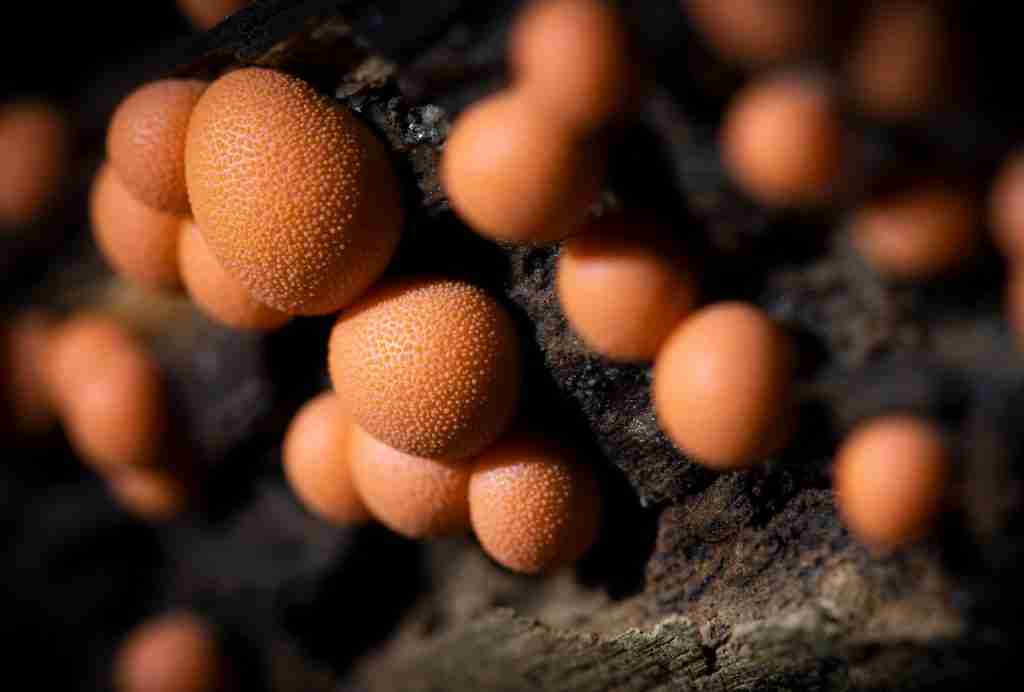
Fungi have evolved a highly effective method for reproduction by releasing an abundance of spores from specialized structures.
These minuscule, dust-like particles are released in vast numbers, increasing the chances of finding suitable environments for growth and propagation. It’s a testament to fungi’s adaptability and reproductive prowess.
21. Fungi used in biotechnology to produce enzymes and antibiotics.
Fungi have earned their place as valuable assets in the realm of biotechnology.
They are employed to produce a wide array of essential products, including enzymes and antibiotics. Their role as biological factories for these critical compounds highlights their immense potential in fields ranging from medicine to industry.
22. Fungi decay wood, essential for forest ecosystems.
In the intricate web of forest ecosystems, fungi are the unsung heroes responsible for the decomposition of wood.
As saprophytic organisms, they excel at breaking down woody materials, recycling nutrients back into the environment. This process is essential for maintaining the health and balance of forested landscapes.
23. Slime molds exhibit complex behaviors and solve mazes.
Slime molds, despite their status as single-celled organisms, exhibit astonishing complexity in their behaviors.
They can navigate mazes, solve puzzles, and make decisions, often challenging our understanding of what single-celled life forms can achieve. The study of slime molds is a testament to the endless wonders of the fungal kingdom.
24.How to draw a mushroom?
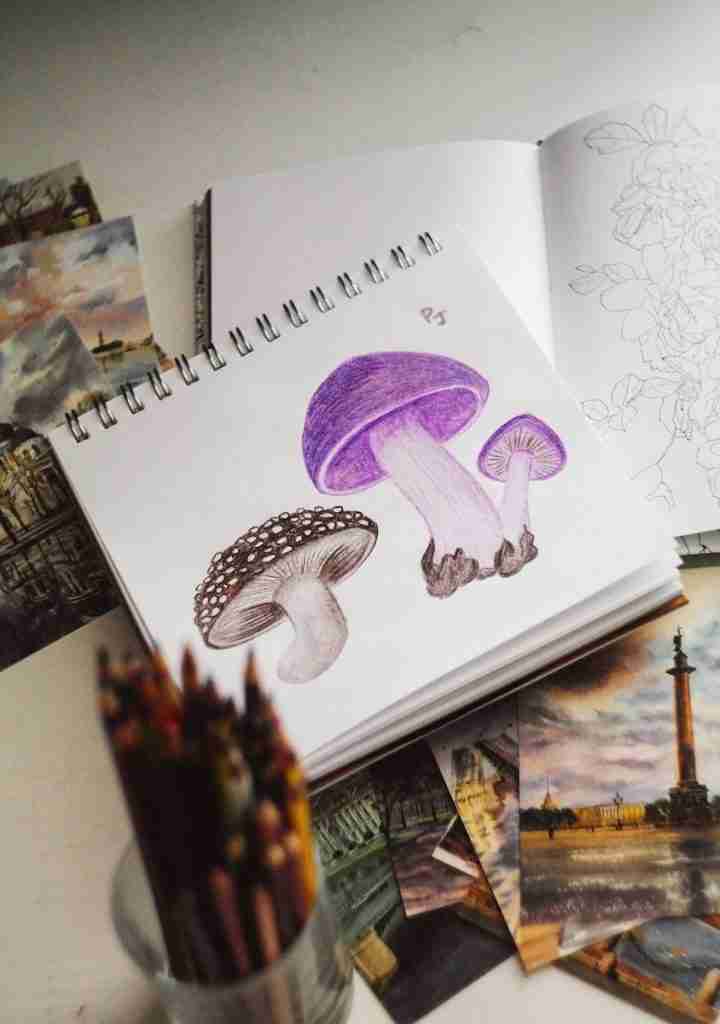
To draw a mushroom, start by sketching a vertical stem and a rounded cap on top.
Add small details like texture lines on the cap and roots at the bottom to complete your mushroom drawing.
25. Fungi reproduce both sexually and asexually.
Fungi exhibit remarkable reproductive flexibility, employing both sexual and asexual methods.
This adaptability enables them to respond to diverse environmental conditions and contributes to their survival and diversity as a kingdom of life.
26. Yeast Saccharomyces cerevisiae used in genetic research.
Yeast, specifically Saccharomyces cerevisiae, plays a pivotal role in genetic research as a model organism.
Its simple genetics and rapid growth make it an invaluable tool for scientists studying fundamental biological processes, offering insights into genetics, cell biology, and biotechnology.
27. Mycoremediation employs fungi to clean up pollutants and toxins.
Mycoremediation, an innovative environmental approach, harnesses the remarkable abilities of fungi to remediate polluted ecosystems.
These fungi break down contaminants and toxins, offering a sustainable and natural solution to environmental challenges. Mycoremediation represents a powerful method for cleaning up and restoring damaged environments, demonstrating the potential of fungi to play a vital role in ecological restoration.
FAQs
A fungus is a type of eukaryotic organism that belongs to the kingdom Fungi. Fungi are distinct from plants, animals, and bacteria.
Fungi are characterized by their absorptive nutrition, chitin cell walls, mycelium and hyphae structures, unique reproductive structures, and the absence of chlorophyll.
No, fungi are not bacteria. Fungi and bacteria are both types of microorganisms, but they belong to different biological groups.
Fungi establish mycorrhizal associations, intricate underground networks that enhance nutrient absorption and disease resistance in plants.
Mycophobia is the fear of mushrooms, which can lead to an aversion to these intriguing organisms.

